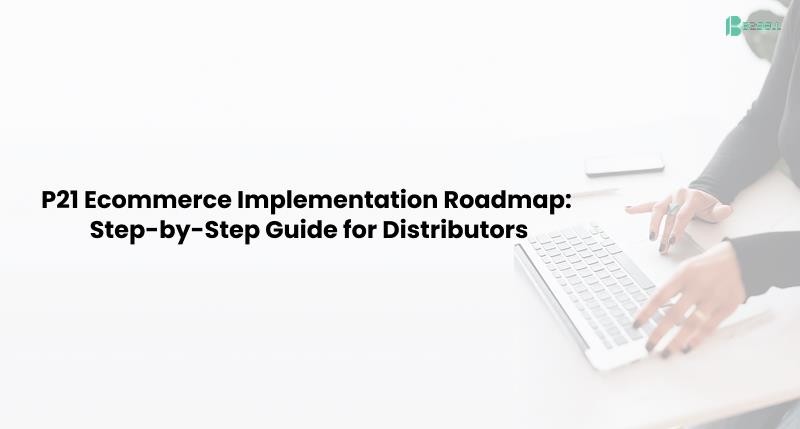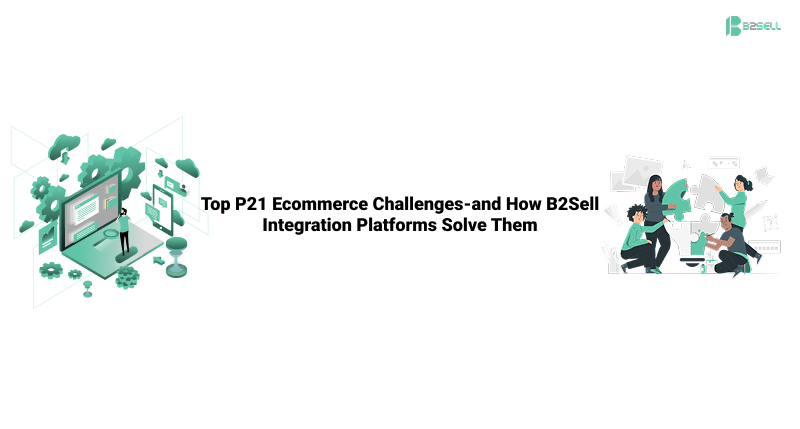The Power of Integration in Modern Commerce
In today’s competitive digital commerce ecosystem, businesses demand seamless, real-time connectivity between their eCommerce and back-office systems. When seamlessly integrated, two industry-leading platforms—Oracle NetSuite for ERP and Adobe Commerce (Magento) for eCommerce—can revolutionize business operations and drive end-to-end efficiency.
By connecting NetSuite and Adobe Commerce, businesses unlock new levels of efficiency, real-time visibility, customer experience personalization, and operational automation. This blog guide explores everything you need to know about NetSuite and Adobe Commerce integration, including its benefits, technical approaches, key features, FAQs, and why B2Sell is the go-to partner for this transformative solution.
What is NetSuite?
NetSuite is a cloud-based Enterprise Resource Planning (ERP) platform developed by Oracle. It provides businesses with real-time access to financials, CRM, supply chain, inventory, and eCommerce data.
Core Capabilities:
- Financial Management
- Order Management
- Inventory and Supply Chain Management
- CRM and Customer Support
- Procurement and Warehouse Management
NetSuite enables businesses to operate more efficiently by centralizing data and automating core operations.
What is Adobe Commerce (Magento)?
Adobe Commerce, previously known as Magento Commerce, is a powerful open-source eCommerce platform known for its flexibility, scalability, and extensive feature set.Owned by Adobe, it caters to both B2C and B2B merchants.
Key Features:
- Customizable storefront and checkout
- B2B account management tools
- Multi-channel and multi-site support
- Integrated product content and experience management
- Marketing automation and customer segmentation
Adobe Commerce allows brands to deliver highly tailored online experiences across devices.
Why Integrate NetSuite with Adobe Commerce?
Standalone platforms create silos that slow down operations and limit growth. Integrating Adobe Commerce with NetSuite provides a unified commerce infrastructure where data flows seamlessly in real time.
Strategic Advantages:
.png)
- Eliminate manual data entry and reduce errors
- Enable real-time synchronization of orders, customers, inventory, and shipping data across systems.
- Accelerate order-to-cash cycle
- Offer personalized customer experiences
- Streamline B2B and B2C workflows
Key Benefits of Integrating Oracle NetSuite with Adobe Commerce (Magento)
.png)
a. Real-Time Data Synchronization
- Auto-sync orders, inventory levels, shipping status, product details, and customer info between platforms
b. Improved Order Fulfillment Accuracy
- Fulfill faster with real-time inventory and shipping data in both systems
c. Enhanced Customer Experience
- Deliver timely updates, accurate inventory, and personalized offers
d. Automation of Workflows
- Automate repetitive tasks like order import/export, invoice creation, and shipping updates
e. 360-Degree Business Visibility
- Centralize insights from sales, finance, logistics, and marketing for strategic planning
f. Scalability
- Handle growing SKU catalogs, customer bases, and order volumes with ease
Common Integration Challenges
While integration offers significant advantages, poorly executed setups can create bottlenecks.
Top Pain Points:
- Data Mapping Conflicts: Inconsistent or misaligned data fields between Adobe Commerce and NetSuite can lead to synchronization errors and operational delays.
- Order Sync Delays: Lag in syncing order or shipment data
- Inventory Discrepancies: Delayed or incorrect stock updates can result in overselling, backorders, and customer dissatisfaction.
- Custom Workflow Requirements: B2B businesses often need complex business rule logic
Solution:
Choosing a reliable integration partner like B2Sell solves these problems with pre-built connectors and customizable workflows.
Must-Have Features of a Successful Integration
To guarantee a smooth and efficient Adobe Commerce–NetSuite integration, prioritize the following essential features:
%C2%A0by%20B2Sell%C2%A0.png)
Bi-Directional Sync:
- Orders, customers, inventory, product info
Custom Mapping and Field-Level Control:
- Flexible mapping of data fields across platforms
Workflow Automation:
- Automated invoice generation, payment posting, shipping confirmation
Error Monitoring and Logging:
- Error handling, logs, and retry mechanisms
Scalability and Extensibility:
- Support for large product catalogs, custom objects, multi-site, and multi-language setups
A Closer Look at B2Sell’s NetSuite + Adobe Commerce Integration
B2Sell provides a robust pre-built connector tailored for NetSuite and Adobe Commerce users. It supports real-time, automated syncing of key data sets and is fully customizable.
Key Features:
%20Integration.png)
- Real-Time Sync: Orders, shipments, products, customers
- Custom Business Logic: Role-based workflows for B2B/B2C
- Support for Bundles, Kits, Matrix Items
- Tax and Shipping Synchronization
- Multi-Warehouse Inventory Tracking
- Multi-Currency and Language Support
Why B2Sell?
- Proven track record with NetSuite + Adobe Commerce integrations
- Expert support for onboarding, implementation, and training
- Scalable to meet enterprise needs
Use Cases and Real-World Scenarios
B2B Wholesale Distributor
- Sync bulk order invoices, multi-location inventory, credit terms
Global eCommerce Brand
- Multi-language, multi-currency order syncing
D2C Fashion Retailer
- Real-time stock sync across multiple warehouses
- Personalized experiences based on NetSuite CRM data
Technical Architecture of the Integration
B2Sell offers a robust, API-first integration framework that ensures reliability, scalability, and flexibility.
Key Components:
- REST/SOAP API Integration: Secure communication between Adobe Commerce and NetSuite
- Middleware Layer: Supports mapping logic, error handling, and transformation
- Batch & Real-Time Sync: Schedule updates or trigger instant syncs based on events
- Secure Infrastructure: Ensures encrypted data transmission while adhering to GDPR and CCPA regulations for robust privacy and compliance.
This modular architecture makes it easy to add features as your business evolves.
Future Trends in ERP and eCommerce Integration
The integration landscape is evolving rapidly as technologies mature and customer expectations rise. Here are a few trends to watch:
a. AI and Predictive Analytics
AI-powered analytics tools will help businesses predict demand, optimize inventory, and personalize offers in real time using data from both NetSuite and Adobe Commerce.
b. Headless Commerce
Decoupling the front-end from the back-end allows businesses to deliver lightning-fast, personalized experiences. A NetSuite-Adobe integration will need to support headless architectures.
c. Voice Commerce and IoT Integration
As more shoppers use voice assistants or smart devices to shop, integrated ERP and eCommerce platforms will ensure accurate data sync for order processing and tracking.
d. Hyper-Automation
Combining AI, RPA, and integration tools like B2Sell enables businesses to automate end-to-end processes: from order creation to inventory allocation and fulfillment.
e. Cross-Platform Personalization
Leveraging integrated customer data from NetSuite and Adobe allows for omnichannel personalization across email, mobile, chat, and web.
Frequently Asked Questions (FAQs)
Q1: What is the best method to integrate NetSuite with Adobe Commerce?
A: The best method is using a pre-built connector like B2Sell, which offers scalable, real-time, customizable integration.
Q2: How long does integration typically take?
A: Depending on customization, a typical integration project can take 2-8 weeks.
Q3: Can I sync custom attributes and fields?
A: Yes, with B2Sell you can map and sync custom fields, product types, and workflows.
Q4: Will syncing affect site speed?
A: No, syncing runs in the background through secure APIs without affecting storefront performance.
Q5: Can I use this for both B2B and B2C commerce?
A: Absolutely. B2Sell supports complex B2B logic alongside flexible B2C experiences.
How to Get Started with B2Sell Integrations
Ready to unlock the power of unified commerce?
Here’s how to start:
- Book a Consultation with B2Sell’s Integration Experts
- Define Your Requirements – Workflows, data points, business rules
- Accelerate Implementation – Launch quickly with B2Sell’s ready-made connectors for seamless integration
- Training and Support – Ensure your teams are fully trained and ready
Conclusion: Future-Proof Your Digital Business with B2Sell
As the digital landscape becomes more demanding, integration is no longer optional—it’s a catalyst for growth. By connecting NetSuite and Adobe Commerce, businesses eliminate data silos, reduce costs, and elevate customer experiences.
With B2Sell’s integration platform, you get:
- Faster time to market
- Reliable syncing
- Enterprise-grade scalability
Whether you’re a fast-scaling D2C brand or a global B2B distributor, B2Sell’s NetSuite + Adobe Commerce integration solution empowers your business to operate smarter and grow faster.
Ready to get started? Contact B2Sell today and accelerate your digital transformation journey with powerful, real-time integrations!

%20%20%20Empowering%20eCommerce%20with%20B2Sell%20.png)





.png)